As I've mentioned in earlier journal entries, most of our seabird work here in the Pribilofs is with the Black-legged Kittiwake and Thick-billed Murres. These birds share this island with many other seabird varieties. Some, like the murres are rather large, while others can be tiny, like the Least Auklet.
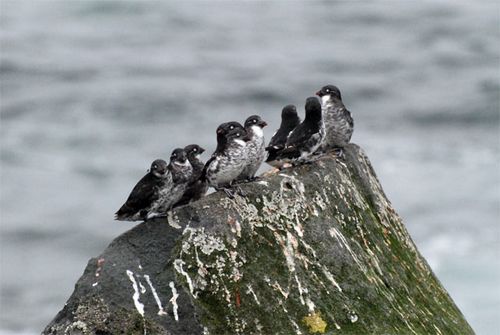
In terms of size, the auklet is about the same length as a sparrow, though a good bit heavier. Today I had the opportunity to join Ine Dorresteijn and Thibaut Vergoz who are conducting research on auklets and other species of seabird on St. Paul Island through the University of Alaska at Fairbanks.
I asked the project leader Ine, a bit about the study and about Least Auklets. Here is what she had to say:
http://
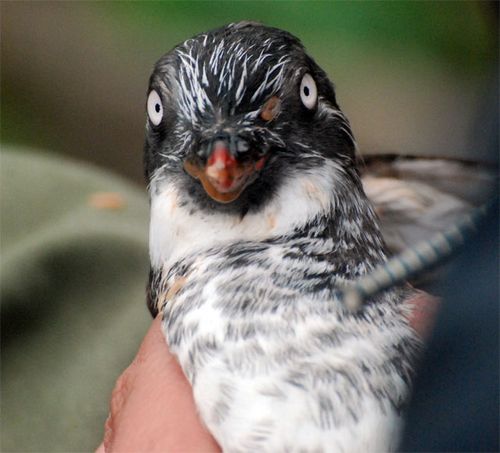
Every Sunday for the past few weeks, Ine and Thibaut have been working at Zapadni, a beautiful part of St. Paul Island that is an important rookery for seabirds and Northern Fur Seals.

The scientists are studying the levels of stress hormones in captured birds, by collecting small blood samples; and determining what the Least Auklets are eating by collecting their puke (By the way, that's actually what the scientists call it and that's what is written on the various data forms that are used out here). I know, you're probably thinking that that is pretty gross! Actually, it's really not that bad and it will go a long way toward understanding the natural history of these birds.
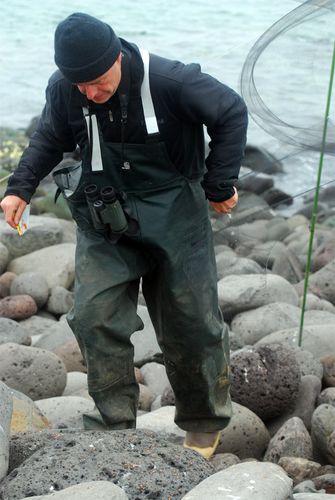
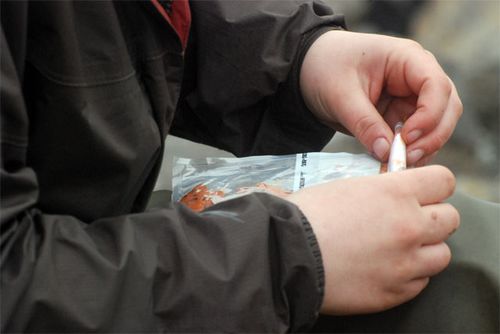
How do we collect their puke sample? With Least Auklets it is very easy, as soon as you catch them they almost always regurgitate their most recent meal. Using a metal spoon and a little plastic bag, we scoop it up off the rocks, the mist net, your shirt, or whatever, and collect it and label it for the research. The samples are sent off to a laboratory, where other scientists can analyze what the auklets are eating. This information can be extremely valuable as they monitor changes to the ecology of the Bering Sea. They want to find out if the auklet's diet changes if there are changes in food availability, variations in climate patterns, and what the affect of these changes might be on these little seabirds. Catching Least Auklets is actually pretty easy, much easier than catching a kittiwake (see my most recent previous journal entry).
The scientists use a mist net, which is about the size of a badminton net, and set up almost the same way, strung up between two poles. The big difference is the mesh. The mist nest has an extremely fine mesh, so fine that it is almost invisible. At the study site, the birds are flying all around, back and forth, making a chirping trill of a call. Every few minutes, a Least Auklet that isn't careful, flies into the net, gets tangled up and finds itself a participant in a scientific research project.
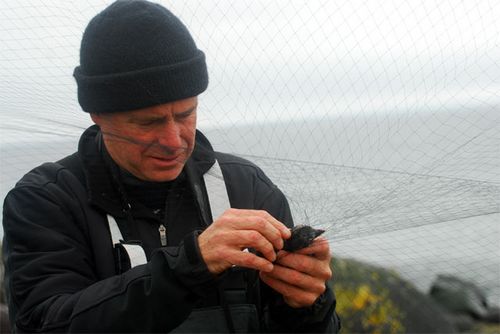
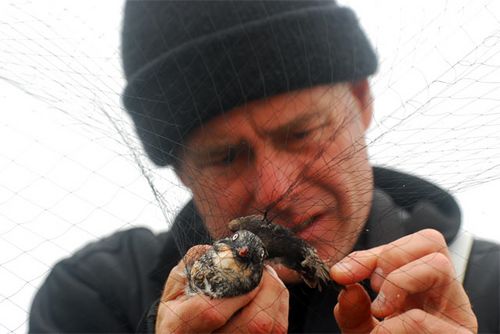
I had a chance to assist with the project by helping to free some birds and collecting "diet samples". It was a great way to see these auklets up close and personal and I learned a lot about these interesting little seabirds. Thanks to Ine and Thibaut for allowing me share a day in the field with them!


Comments